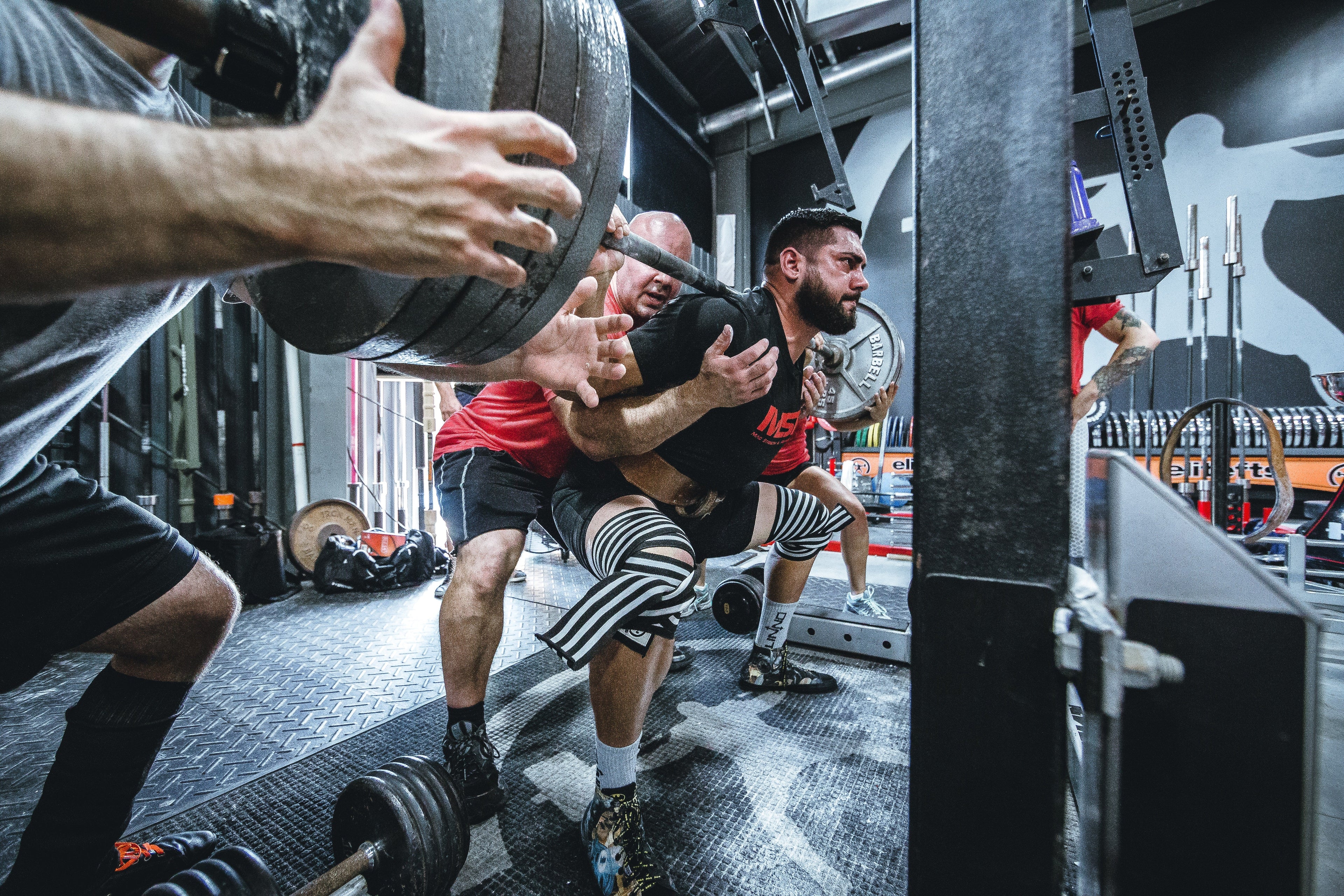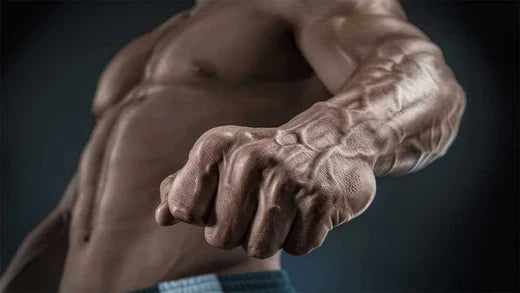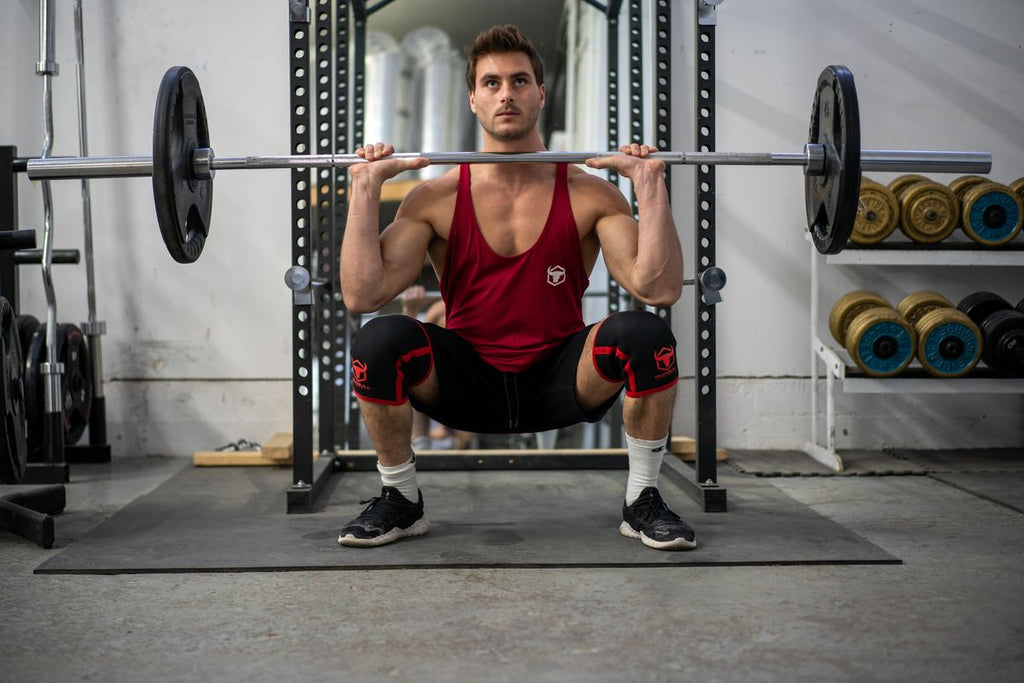Do Squats Strengthen Knees? The Science Behind Squatting for Stronger Knees

Do squats strengthen knees? This is a common question for many gym goers looking to begin an exercise program. The squat is a foundational, multi-joint movement that applies to activities of daily living and performance-related goals.
From professional athletes looking to jump higher, to older populations hoping to maintain mobility and improve health span, the squat plays an integral role in physical preparation programs.
However, because of its widespread use (and misuse) and the explosion of information online, there are a lot of myths surrounding squats and knee health. This article will explore the relationship between squatting and its ability to strengthen the knees.
The Almighty Squat
The squat is one of the most popular and polarizing exercises in the fitness world. When you consider how many times you lower yourself down to a seated position and stand back up during the day, you recognize how fundamental the squat pattern is. From the toilet to the couch, you’re squatting each and every day. By adding a load to this pattern and training it frequently, you will strengthen your hip and knee musculature and improve neuromuscular efficiency.
The squat is a closed-chain exercise often used in bodybuilding, powerlifting, athletic training, and even rehabilitation because of its ability to develop strength, power, and hypertrophy. Compound exercises like squats involve the activation of many muscles, most notably the quadriceps, gluteals, hamstrings, adductors, gastrocnemius, and even the lower back musculature. When taking the squat through a full range of motion you will also challenge joint mobility, like ankle dorsiflexion.
Resistance training requires that the body interact with forces during dynamic movements. The squat features shear and compressive forces on the knee at varying amounts during different degrees of motion. While compressive force might sound frightening, remember that the body adapts to the stimulus that you place on it.
Most are familiar with the muscular or strength improvements from lifting weights, but there are also changes in the joints. Cartilage thickens and tendons become stronger and stiffer as you challenge them with loads. What is the best exercise to strengthen knees? A properly programmed squat will strengthen your knees and create a more resilient joint.
Are Squats Bad for Your Knees?
When you stress a muscle, bone, tendon, or ligament - it adapts and gets stronger. Low muscle strength is associated with a greater risk of all-cause mortality and an increased risk of developing osteoporosis. That’s why the American Health Association recommends resistance training a minimum of two times per week.
The squat primarily loads the knee joint, which leads to an increase in the external knee flexion moment. As you descend into your squat during the ‘eccentric’ portion of the exercise, there is increased dynamic loading on the knee. This is why there are so many questions surrounding squats and knee pain.
If someone is experiencing knee pain, any exercise that loads the knee joint could potentially irritate it. However, this doesn’t imply that squats are bad for your knees. You might just need to alter the movement or give the tissue time to calm down. At some point the joint will need to be stressed again and graded exposure to exercise will help to rebuild and restore function. This is where you would use the squat to help strengthen the knees by slowly building tolerance to loads.
Strength is protective and can help reduce the risk of injuries. That’s why a properly periodized squat program is beneficial for the knee joint and developing knee stability. Wearing knee sleeves for squats could also help provide extra stability or support for the knee joint. A quality knee sleeve will offer compression and help keep the muscle warm during your sets. If you’re looking to start running, playing sports, or just want to maintain function, squats should be a staple in your training.
How Low Should You Squat?
Squat depth is a never-ending debate in the fitness world. How low should you squat? The simple answer is - whichever is the safest, most comfortable, and effective way to reach your desired goal.
Here’s a checklist to finding your squat depth:
- Why are you using the squat?
- Does your goal require it?
- Does your goal require a specific depth?
- What feels best for your individual anatomical structure and mobility/flexibility?
- Risk:reward ratio based on the above and previous injuries.
If you want to compete in powerlifting, your sport requires a depth slightly below parallel. A track and field athlete may use partial squats as these potentially transfer better to sprint speed. A bodybuilder or rehabilitation professional might use a deep squat with a full range of motion to enhance hypertrophy or challenge joint integrity at varying angles. The answer is relative to the goal.
There is a common belief that squatting below 90 degrees places more ‘stress’ on the knee joint. However, some research in this area suggests that the highest compressive forces are seen at 90 degrees, as anything below this invokes the ‘wrapping effect’.
As you drop into a squat there’s contact of the femur against the patella. However, as you go deeper, the quadriceps tendon comes in contact with the femur and increases the surface area. A larger surface area potentially leads to more force dissipation and thus, less stress on the knee joint. This is the theory behind the ‘wrapping effect’ and why low squats may even be more knee-friendly than higher squats.
Can You Do Squats If You Have Bad Knees?
The answer is an overwhelming yes. First, you should challenge the notion of having ‘bad’ knees. Using this kind of language can potentially create a nocebo effect and exacerbate your issues. The nocebo effect suggests that a negative perception or expectation can worsen symptoms and increase anticipatory anxiety.
Why does the placebo effect work? Because you expect it to work. If you expect to experience pain, or believe your knees are ‘damaged’, you can create a self-fulfilling prophecy. Often when people are in pain they tend to move less. This can lead to stiffness, fear or anxiety around movement, deconditioning, and lack of blood flow to the tissue.
Blood flow is restorative in nature and helps provide nutrients to the muscles. That’s why a physical therapist will often say, “movement is medicine.” In order to break this cycle you need to stress the tissue, rebuild capacity, and change how you view your knees.
The squat can be used to not only improve the musculature but also your brain. You start by finding a squat pattern that you can tolerate with no more than a 3 or 4 out of 10 on the pain scale. From there, you gradually expose the muscle to incremental loads over time and create a positive experience with movement.
As the knee gets stronger, the perception of this joint improves as well. By creating a new model of your knee in your brain, you no longer expect pain and start to believe the knee is strong and capable. Strength training is a powerful tool to combat age-related decline and even knee arthritis.
Squats And Knee Strength - A Match Made in Heaven
As I write this, our country is suffering from an inactivity crisis. Knee arthritis and other debilitating musculoskeletal issues are on the rise. Rather than bombard people with complex information, or create fear around certain movements, the goal should be to inspire as many people to move as possible. The fear around squats and knee health is detrimental and largely inaccurate.
Squats are a fundamental human movement and if you want stronger, more resilient knees you must challenge this pattern. If you suffer from knee pain, or simply want to reduce your risk of injury, training the squat can offer you innumerable benefits.
Do squats strengthen knees? Absolutely, but now you know that the gains don’t just stop there. Now get to squatting.


